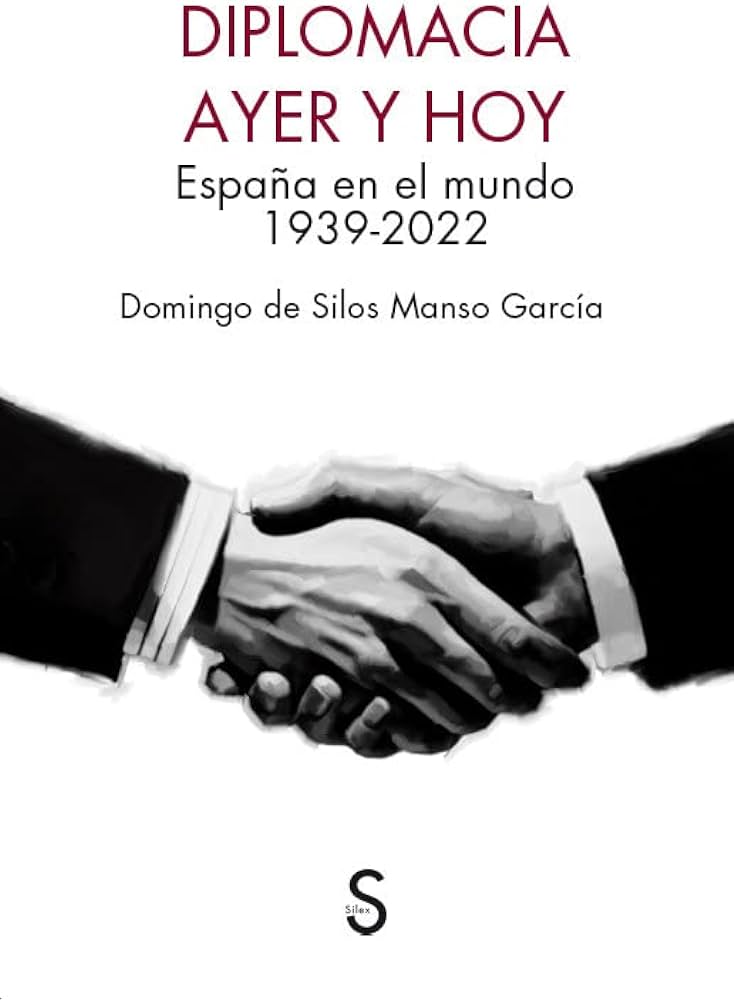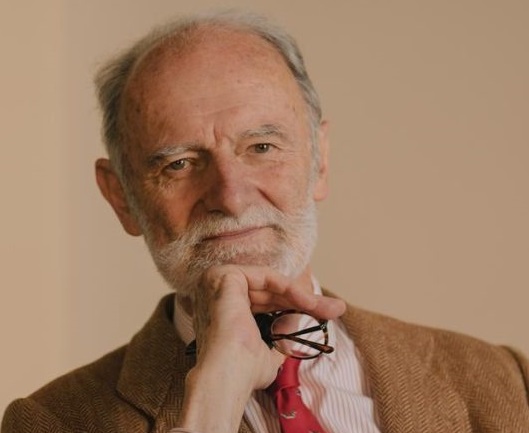The book “DIPLOMACIA AYER Y HOY. España en el mundo 1939-2022” (Diplomacy of yesterday and today. Spain in the world 1939-2022), author Domingo de Silos MANSO GARCÍA, traces the history of the international relations of Spain, and the great change that has taken place in that period of time.
 Spain, April 1939: a ruined and politically divided country at the end of a civil war (1939); Franco’s dictatorship. After the end of the World War, the newly created United Nations decided in 1946 to isolate Spain internationally, which would last until 1950. An autarkic economy, on the verge of bankruptcy in 1958. Spain began to open up to the world in 1959 (Stabilization Plan). It joined the IMF, the World Bank, the OECE (future OECD) and the GATT. In the 1960s, the economy grew at 7% per annum; GDP increased from 56% of that of Western Europe (1960) to 75% (1973). Imports, exports and foreign investments increase; the number of foreign tourists rises from 6 million in 1960 to 34 million thirteen years later. Emigration for labor reasons to Western European countries.
Spain, April 1939: a ruined and politically divided country at the end of a civil war (1939); Franco’s dictatorship. After the end of the World War, the newly created United Nations decided in 1946 to isolate Spain internationally, which would last until 1950. An autarkic economy, on the verge of bankruptcy in 1958. Spain began to open up to the world in 1959 (Stabilization Plan). It joined the IMF, the World Bank, the OECE (future OECD) and the GATT. In the 1960s, the economy grew at 7% per annum; GDP increased from 56% of that of Western Europe (1960) to 75% (1973). Imports, exports and foreign investments increase; the number of foreign tourists rises from 6 million in 1960 to 34 million thirteen years later. Emigration for labor reasons to Western European countries.
In 1970 Spain signed an agreement with the European Economic Community (EEC), which brought it closer to the great objective of Europe.
After Franco’s death (November 1975), the “miracle” of the Transition takes place: Spain will be a democracy, the exiles return, within an atmosphere of consensus: “I left with a clenched fist, I return with an open hand” (Rafael Alberti); Spain establishes diplomatic relations with the Soviet Union, with communist countries, with Mexico. It joins the Council of Europe (1977), NATO (1982) and in 1985 the EEC as a full member. Investments, trade, tourism… grow.
All this resulted in a new international presence for Spain: in 1991, the Middle East Peace Conference was held in Madrid, attended by the President of the United States and Gorbachev, among other personalities. In 1992, Madrid was the European Capital of Culture and the second Ibero-American Summit; Seville hosted a Universal Exposition; Barcelona hosted the Olympic Games…
From 1996 onwards, large Spanish companies began to invest outside Spain, particularly in Latin America. In 1999 Spain was among the founding countries of the euro; its armed forces began to participate in peacekeeping operations in various parts of the world. Little by little, the country that had been a country of emigration is changing its sign and receiving an increasing number of immigrants. In the mid-2000s, Spain is the eighth largest country in the world in terms of GDP. A big change from that isolated and autarkic Spain.
The international economic crisis that began with the bankruptcy of Lehman Brothers (2008) severely affects its economy. Spain will not be intervened; it receives an assistance program from the Eurogroup in 2012. In 2014, GDP starts to grow again.
The book provides a detailed account of the thread of events that have led to today’s Spain. Divided into twelve chapters (six up to 1975, another six up to 2018), with an appendix on the current government and a final note with the main challenges facing Spain today. Each chapter is preceded by an “Apunte” (of one or two pages) summarizing the major themes of the chapter (for accelerated readers), and a section with the major international events of the world in that period. Numerous footnotes explain and punctuate the events and protagonists. In total 383 pages, including the introduction. From there a chronology is added, year by year, of the international events in Spain.
The back cover of the book includes the opinions of two prominent foreign ministers:
“This book contains an excellent contribution to Spain’s role in the world. The synthetic form used makes it easy to find answers to major issues in Spain’s relations with other countries and with international organizations”. Marcelino Oreja
“An obligatory reference to know our recent foreign policy”. Josep Piqué
A well-structured book, which is easy to read and contributes to understanding Spain and international relations.
Book: “DIPLOMACIA AYER Y HOY. España en el mundo 1939-2022“. SILEX Publishing House.
Author: Domingo de Silos MANSO GARCÍA

Diplomat, ambassador. Alumni of the French National School of Administration (ENA), NATO Defense College (Rome), CESEDEN (Madrid). Commissioner of Spain for the International Exhibition of Genoa (1992). Founding member of the Friends of the Prado Museum, of the Friends of the Monastery of Silos, of “Rencontres franco-espagnoles de l’ENA”; member of the International Council of Museums (ICOM).
He has been general director of the Editorial Prensa Ibérica (EPI) group. Collaborates with newspapers and magazines; author of the interview program “El Catalejo”. Author of the novel, “La Onza de Oro” (two awards), which traces the life of Spain from 1939 to 1992.







